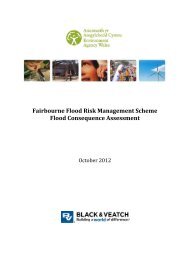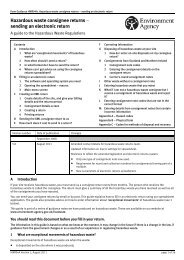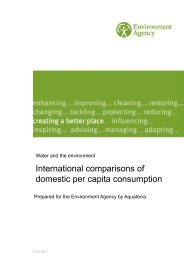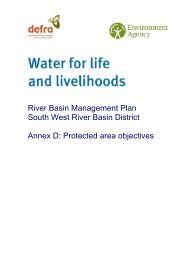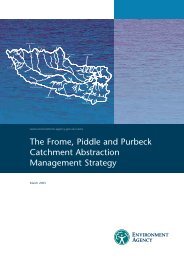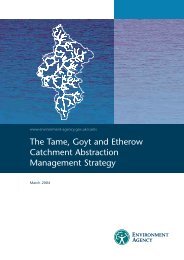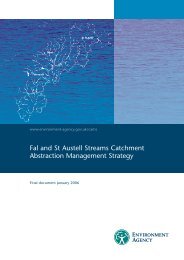Karenia mikimotoi
Karenia mikimotoi
Karenia mikimotoi
Create successful ePaper yourself
Turn your PDF publications into a flip-book with our unique Google optimized e-Paper software.
Tanichthys albonubes (Igarishi et al., 1999, cited in Satake et al., 2005). The disparity<br />
between the apparent weak toxicity of the gymnocins as measured by laboratory<br />
bioassays and obvious effects of K. <strong>mikimotoi</strong> blooms in the natural environment was<br />
attributed to low solubility in water of the pure compounds, a factor that may have<br />
reduced contact with the fish gills. It was suggested that under bloom conditions the<br />
cells of K. <strong>mikimotoi</strong> clog the gills of fish and are in direct contact with the lamellae and<br />
thereby might enhance transfer of the gymnocins.<br />
A study of the structure-activity relationship of gymnocin-A indicated that the α, βunsaturated<br />
aldehyde functionality of the side chain caused cytotoxicity, which was<br />
also related to the length of the molecule (Tsukano et al., 2006).<br />
Toxic effects due to other compounds have been reported and are summarized in<br />
Table 4.<br />
Table 4. Reports of toxic or allelopathic effects of K. <strong>mikimotoi</strong>.<br />
Effect Compound Detail<br />
K. <strong>mikimotoi</strong> produced<br />
superoxide in the culture<br />
medium but to a lesser<br />
Reference<br />
production of<br />
free radicals<br />
superoxide anion<br />
and hydrogen<br />
peroxide<br />
extent than Chattonella<br />
marina<br />
(Raphidophyceae). Also<br />
fish mucus and other<br />
-<br />
compounds stimulated O2<br />
production in C. marina<br />
but not K. <strong>mikimotoi</strong>.<br />
Gymnodinium <strong>mikimotoi</strong><br />
contained 17% of monogalactosyl<br />
diacylglycerol<br />
and digalactosyl<br />
diacylglycerol, which had<br />
Yamasaki et al. (2004)<br />
and see Marshall et al.<br />
(2005)<br />
toxicity of lipids glycoglycerolipids haemolytic activity.The<br />
major unsaturated fatty<br />
acid of the glycolipids was<br />
octadecapentaenoic acid<br />
(18:5n-3)<br />
Parrish et al. (1998)<br />
fatty acids<br />
fatty acids<br />
Pure (synthesised)<br />
octadeca-pentaenoic acid<br />
(18:5n-3) stimulated<br />
mucus production and<br />
affected morphology of<br />
ionocytes and inhibited<br />
ATPases in gills of sea<br />
bass Dicentrarchus<br />
labrax. Possible effects<br />
on osmoregulation<br />
Pure (synthesised)<br />
octadeca-pentaenoic acid<br />
(18:5n-3) and other fatty<br />
acids known to be present<br />
in G. cf. <strong>mikimotoi</strong> altered<br />
intracellular pH of isolated<br />
trout hepatocytes and<br />
decreased K + uptake into<br />
the hepatocytes,<br />
indicating ATPase<br />
inhibition, High<br />
concentrations (10 -5 –10 -3<br />
Sola et al. (1999)<br />
Fossat et al. (1999)<br />
14 A Literature review of the potential health effects of marine microalgae and macroalgae




